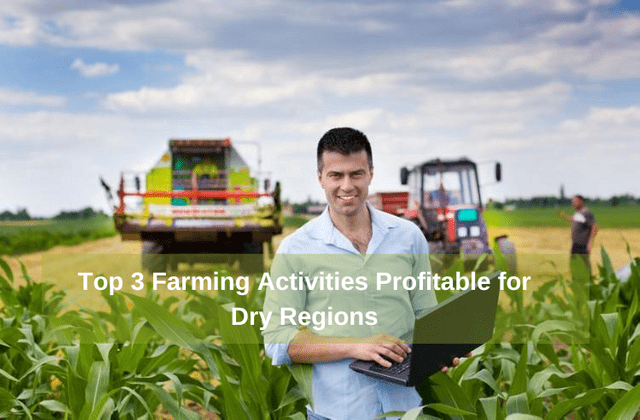Water is the most important aspect of performing agriculture. Not every part of the world is blessed with abundant rainfall throughout the year. Some regions face the wrath of water scarcity to irrigate their land. So does this make such lands less viable for farming? No, it doesn’t!
There are various popular farming practices that are adopted to get the best out of such dry lands, even without natural water infiltration. Let’s discuss in detail the top 3 farming activities or methods that are fruitful to perform even in a dry spell. So whether you are using Eicher 380 or Mahindra 265 with farm implements, note these practices for sure.
- Dryland Farming
Dry or dryland farming is an amazing method to grow crops with the help of winter water stored in the soil, as dry regions can face a shortage of irrigation in the growing season. This farming method works best for the region with less than 750 mm 29 inches of annual rainfall.
Coupled with black soil, this farming is quite a hit. As black soil is fine-grained, is kind of sticky in nature, has rich calcium components, and can easily retain moisture for longer.
With Dry farming, farmers can grow crops like beans, pumpkins, tomatoes, corn, millet, rye, and other summer crops and grasses that grow crops.
Here are certain practices that are followed in a dry farming method that makes the process even more efficient:
- Lands are tilled less to avoid soil erosion and loss of moisture further.
- Sowing at a wide distance helps plants have a large area for retaining moisture from the soil.
- Ensuring timely removal of weeds as they can unnecessarily take the moisture needed by plants.
- Dust mulching is performed by covering a dry layer of surface soil to prevent soil moisture.
- Irrigated Farming
Since dry regions face water scarcity from less rainfall, they had to resort to other practices that could help push water to the field. And thus, irrigation farming is the best solution.
The practice involves irrigation of crops by routing water from man-made resources such as canals, sprinklers or pipes. And the water retracted is either groundwater or surface water.
Traditional irrigation farming included farmings manually pulling the water from wells and canals to irrigate the land. But to decrease the efforts, now sprinklers, pipes, or certain kinds of water emitters are used. Drip irrigation, rain gun irrigation, and sprinkler irrigation are a few methods through which water is sent to the farm fields.
These regions can grow crops with irrigation farming, such as sugarcane, berries, cotton, maize, beans, etc.
- Mixed Farming
The mixed farming method involves growing arable crops on moderately sized farms and raising livestock. And the dung or waste of the livestock or cattle is used as manure for the farm fields. This method also involves growing multiple compatible and different-sized crops on the field, which helps meet the sustainable and optimised use of natural resources.
Many farmers in dry regions use this farming method to grow cereal crops such as barley, oat, rye, wheat, etc., while simultaneously rearing cattle, sheep, poultry, and pigs for their by-products as meat, milk, wool. This is the most balanced and sustainable farming method that dry lands can easily adopt and make a livelihood even with scarcity of water.
Tips to Do Farming in Areas with Less or No Rainfall
Regions that receive less rainfall don’t have to sit back and wait for rainfall. Let’s help you look at some important tips that can help enhance the above-mentioned farming practices even more.
- Preserve Soil Moisture
Taking care of moisture in the soil is important as less or no rainfall can temper the crop. Out of the many things that can hamper soil moisture from getting absorbed by crops is weeds. Weed control programs should be adopted to ensure no weeds germinate and leach water needed for crops. You can follow activities such as slow tilling, mulching, mowing, or sprinkling the land with organic weedicides.
- Cover the Ground with Organic Mulch
This is another best practice for locking soil moisture. You can create organic mulch through dead leaves, wood drips, hay or dry soil and cover the ground with it. This will act as a blanket to the ground and keep the soil moist & protected from winds and the sun heat.
For a fact, mulches, if not created from plastic, can, after a point, break down into organic substances, which also help add moisture to the soil.
- Grow Crops Suitable for Dry Regions
Another factor that can help you earn big bucks from your farming activities is deciding the suitable crop type. Since not all crops are drought tolerant, wise choices should be made.
Here are a few crops that can be grown even if the rainfall is scarce:
- Tomatoes
- Eggplant
- Peppers
- Sweet potatoes
- Potatoes
- Garlic
- Okra
These were the top 3 farming methods that are helpful in meeting the farm yield, no matter if you implement it with Powertrac 445 or any latest 4WD tractor of choice!


